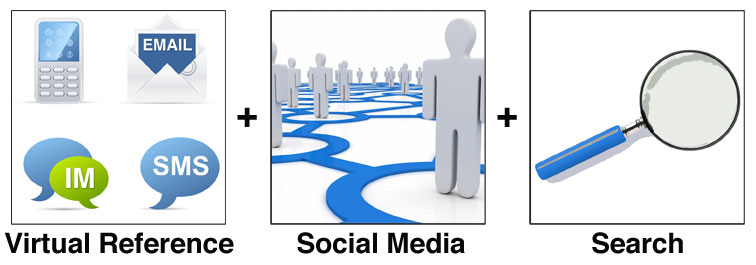I’m fascinated by the new report from Robin Hastings, Collaboration 2.0 and I haven’t even read it yet. My fascination with it is the fact, and I’m not really too surprised given the library industry, that a report has been written to help library managers make a case for utilizing social networks to increase outreach and collaboration. I think it’s great! A company I founded and still a partner in banned instant messaging for employees while at work. Even though the company is spread over offices in 4 cities with collaboration being a necessary part of every day, the thinking was that people spend too much time chatting and not enough time working. As against the policy as I was, I don’t “work” there anymore, so I let it go. There was no uprising, there was no coming together to make a case for why things would be better, no reports written to arm employees with the info they needed to make a case, mostly posts on how to circumvent firewalls or philosophic questions about whether or not it should be allowed. Then again, these employees weren’t and are not blocked from those sites, they were just told it was against company policy.
Text a Libarian is about to launch a new service we call RefStart. It’s a web application combining virtual reference with social media and search, giving librarians one-click access to the web 2.0 tools they like best. I say “like best” because the fully flexible system lets them choose, so if they use Facebook, Twitter, Delicious, Flickr and Google, for example, the system let’s users quickly link to those pages while notifying them on the page when a new text message reference comes in through our system. The initial reaction we’ve received about the feature has been very positive, but I’m curious to see which librarians will see it and say “well this is great, but we can’t use Facebook or Twitter.” It won’t matter either way because they can simply choose elements of their page that don’t access those (or other) banned sites, but it’ll be interesting to see how many come forth with that info.
My favorite thing about working at Mosio / Text a Librarian is that the day-to-day energy of this place is in the creating solutions, solving pain points, making reference librarian’s day-to-day tasks easier. This isn’t lip service, everyone here loves what they do. We ask, we watch, we listen to librarians in trying to find out what will make not only the best text messaging reference software in the industry, but how we make it the best virtual reference software on the planet. This way of thinking fosters innovation, it’s what made the development team come up with an optional, pleasant audible noise when a new question came in because a library customer wasn’t allowed to use IM. The task was fun: “What does an incoming question sound like?” We found a great one, then got a request from the same library that the sound was SO pleasant that it blended in with the ambient noise of the library. Their request? “Just below the level of foghorn. How about some Led Zeppelin? 😉 LOL” Awesome.
I’ll loop back and re-post about how the experience goes, but whether or not those we talk to are able to access Facebook, Twitter and the like, RefStart will be there and work well. After reading Robin’s report, armed with the tools librarians need to gain access and open up outreach to the new web 2.0 technologies being used by thousands of other libraries, they’ll be able to update with no problems.
